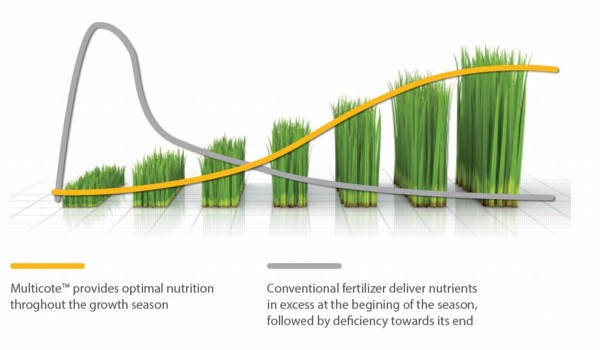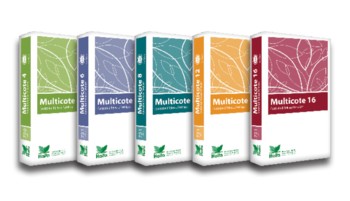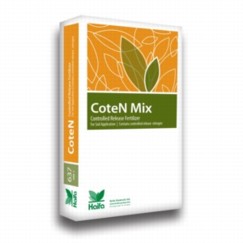Full name *
Email *
Country *
Country Afghanistan Aland Islands Albania Algeria American Samoa Andorra Angola Anguilla Antarctica Antigua and Barbuda Argentina Armenia Aruba Australia Austria Azerbaijan Bahamas Bahrain Bangladesh Barbados Belarus Belgium Belize Benin Bermuda Bhutan Bolivia Bosnia and Herzegovina Botswana Bouvet Island Brazil British Indian Ocean Territory British Virgin Islands Brunei Bulgaria Burkina Faso Burundi Cambodia Cameroon Canada Cape Verde Caribbean Netherlands Cayman Islands Central African Republic Chad Chile China Christmas Island Cocos (Keeling) Islands Colombia Comoros Congo (Brazzaville) Congo (Kinshasa) Cook Islands Costa Rica Croatia Cuba Curaçao Cyprus Czech Republic Denmark Djibouti Dominica Dominican Republic Ecuador Egypt El Salvador Equatorial Guinea Eritrea Estonia Ethiopia Falkland Islands Faroe Islands Fiji Finland France French Guiana French Polynesia French Southern Territories Gabon Gambia Georgia Germany Ghana Gibraltar Greece Greenland Grenada Guadeloupe Guam Guatemala Guernsey Guinea Guinea-Bissau Guyana Haiti Heard Island and McDonald Islands Honduras Hong Kong S.A.R., China Hungary Iceland India Indonesia Iran Iraq Ireland Isle of Man Israel Italy Ivory Coast Jamaica Japan Jersey Jordan Kazakhstan Kenya Kiribati Kuwait Kyrgyzstan Laos Latvia Lebanon Lesotho Liberia Libya Liechtenstein Lithuania Luxembourg Macao S.A.R., China Macedonia Madagascar Malawi Malaysia Maldives Mali Malta Marshall Islands Martinique Mauritania Mauritius Mayotte Mexico Micronesia Moldova Monaco Mongolia Montenegro Montserrat Morocco Mozambique Myanmar Namibia Nauru Nepal Netherlands Netherlands Antilles New Caledonia New Zealand Nicaragua Niger Nigeria Niue Norfolk Island Northern Mariana Islands North Korea Norway Oman Pakistan Palau Palestinian Territory Panama Papua New Guinea Paraguay Peru Philippines Pitcairn Poland Portugal Puerto Rico Qatar Reunion Romania Russia Rwanda Saint Barthélemy Saint Helena Saint Kitts and Nevis Saint Lucia Saint Martin (French part) Saint Pierre and Miquelon Saint Vincent and the Grenadines Samoa San Marino Sao Tome and Principe Saudi Arabia Senegal Serbia Seychelles Sierra Leone Singapore Sint Maarten Slovakia Slovenia Solomon Islands Somalia South Africa South Georgia and the South Sandwich Islands South Korea South Sudan Spain Sri Lanka Sudan Suriname Svalbard and Jan Mayen Swaziland Sweden Switzerland Syria Taiwan Tajikistan Tanzania Thailand Timor-Leste Togo Tokelau Tonga Trinidad and Tobago Tunisia Turkey Turkmenistan Turks and Caicos Islands Tuvalu U.S. Virgin Islands Uganda Ukraine United Arab Emirates United Kingdom United States United States Minor Outlying Islands Uruguay Uzbekistan Vanuatu Vatican Venezuela Vietnam Wallis and Futuna Western Sahara Yemen Zambia Zimbabwe
Region es *
Region Andalucía - Almería Andalucía - Cádiz Andalucía - Córdoba Andalucía - Granada Andalucía - Huelva Andalucía - Jaén Andalucía - Málaga Andalucía - Sevilla Aragón - Huesca Aragón - Teruel Aragón - Zaragoza Canarias - Las Palmas Canarias - Santa Cruz de Tenerife Cantabria - Cantabria Castilla y León - Ávila Castilla y León - Burgos Castilla y León - León Castilla y León - Palencia Castilla y León - Salamanca Castilla y León - Segovia Castilla y León - Soria Castilla y León - Valladolid Castilla y León - Zamora Castilla-La Mancha - Albacete Castilla-La Mancha - Ciudad Real Castilla-La Mancha - Cuenca Castilla-La Mancha - Guadalajara Castilla-La Mancha - Toledo Cataluña - Barcelona Cataluña - Gerona Cataluña - Lérida Cataluña - Tarragona Comunidad de Madrid - Madrid Comunidad Valenciana - Alicante Comunidad Valenciana - Castellón Comunidad Valenciana - Valencia Extremadura - Badajoz Extremadura - Cáceres Galicia - La Coruña Galicia-Lugo Galicia - Orense Galicia - Pontevedra Islas Baleares - Baleares La Rioja - La Rioja Navarra - Navarra País Vasco - Álava País Vasco - Guipúzcoa País Vasco - Vizcaya Principado de Asturias - Asturias Región de Murcia - Murcia Ciudad Autónoma de Ceuta - Ceuta Ciudad Autónoma de Melilla - Melilla PORTUGAL
Region fr
Region Alsace-Champagne-Ardenne-Lorraine Aquitaine-Limousin-Poitou-Charentes Auvergne-Rhône-Alpes Bourgogne-Franche-Comté Brittany Centre-Val de Loire Corsica Île-de-France Languedoc-Roussillon-Midi-Pyrénées Nord-Pas-de-Calais-Picardy Normandy Pays de la Loire Provence-Alpes-Côte d'Azur
Region gr *
Region Attica Central Greece Central Macedonia Crete Eastern Macedonia and Thrace Epirus Ionian Islands North Aegean Peloponnese South Aegean Thessaly Western Greece Western Macedonia
Region pt
Region Aveiro Beja Braga Bragança Castelo Branco Coimbra Évora Faro Guarda Leiria Lisbon Portalegre Porto Santarém Setúbal Viana do Castelo Vila Real Viseu
Region il *
Region צפון מרכז ובקעת הירדן שפלה ומבואות ירושלים דרום
Region in
Region Andaman and Nicobar Islands Andhra Pradesh Arunachal Pradesh Assam Bihar Chandigarh Chhattisgarh Dadra and Nagar Haveli Daman and Diu Goa Gujarat Haryanav Himachal Pradesh Jammu and Kashmir Jharkhand Karnataka Kerala Lakshadweep Madhya Pradesh Maharashtra Manipur Meghalaya Mizoram Nagaland National Capital Territory of Delhi Odisha Puducherry Punjab Rajasthan Sikkim Tamil Nadu Telangana Tripura Uttar Pradesh Uttarakhand West Bengal
Region au *
Region New South Wales Queensland South Australia Tasmania Victoria Western Australia Norther Territory Pacific Island PNG
Region tr
Region Adana Adıyaman Afyonkarahisar Ağri Aksaray Amasya Ankara Antalya Ardahan Artvin Aydın Balıkesir Bartın Batman Bayburt Bilecik Bingöl Bitlis Bolu Burdur Bursa Çanakkale Çankırı Çorum Denizli Diyarbakır Düzce Edirne Elazığ Erzincan Erzurum Eskişehir Gaziantep Giresun Gümüşhane Hakkari Hatay Iğdır Isparta İstanbul İzmir Kahramanmaraş Karabük Karaman Kars Kastamonu Kayseri Kilis Kırıkkale Kırklareli Kırşehir Kocaeli Konya Kütahya Malatya Manisa Mardin Mersin Muğla Muş Nevşehir Niğde Ordu Osmaniye Rize Sakarya Samsun Şanlıurfa Siirt Sinop Şırnak Sivas Tekirdağ Tokat Trabzon Tunceli Uşak Van Yalova Yozgat
Region mx *
Region Baja California Baja California Sur Chihuahua Durango Sinaloa Sonora Coahuila Nuevo León Tamaulipas Aguascalientes Guanajuato Querétaro San Luis Potosí Zacatecas Federal District México Morelos Colima Jalisco Michoacán Nayarit Hidalgo Puebla Tlaxcala Veracruz Campeche Quintana Roo Tabasco Yucatán Chiapas Guerrero Oaxaca
Region ca
Region British Columbia Alberta Saskatchewan Manitoba Ontario Quebec New Brunswick Prince Edward Island Nova Scotia Newfoundland and Labrador Yukon Northwest Territories Nunavut
Region us *
Region Alabama Alaska Arizona Arkansas California Colorado Connecticut Delaware Florida Georgia Hawaii Idaho Illinois Indiana Iowa Kansas Kentucky Louisiana Maine Maryland Massachusetts Michigan Minnesota Mississippi Missouri Montana Nebraska Nevada New Hampshire New Jersey New Mexico New York North Carolina North Dakota Ohio Oklahoma Oregon Pennsylvania Rhode Island South Carolina South Dakota Tennessee Texas Utah Vermont Virginia Washington West Virginia Wisconsin Wyoming
Region it *
Region Abruzzo Aosta Valley Apulia Basilicata Calabria Campania Emilia-Romagna Friuli-Venezia Giulia Lazio Liguria Lombardy Marche Molise Piedmont Sardinia Sicily Trentino-Alto Adige/Südtirol Tuscany Umbria Veneto
Region br *
Region Acre Alagoas Amapá Amazonas Bahia Ceará Distrito Federal Espírito Santo Goiás Maranhão Mato Grosso Mato Grosso do Sul Minas Gerais Pará Paraíba Paraná Pernambuco Piauí Rio de Janeiro Rio Grande do Norte Rio Grande do Sul Rondônia Roraima Santa Catarina São Paulo Sergipe Tocantins
Region ch *
Region Hebei Heilongjiang Henan Hong Kong Hubei Hunan Jiangsu Jiangxi Jilin Liaoning Macao Nei Mongol Ningxia Qinghai Shaanxi Shandong Shanghai Shanxi Sichuan Tianjin Xinjiang Xizang Yunnan Zhejiang
Phone
Region
Region Andalucía - Almería Andalucía - Cádiz Andalucía - Córdoba Andalucía - Granada Andalucía - Huelva Andalucía - Jaén Andalucía - Málaga Andalucía - Sevilla Aragón - Huesca Aragón - Teruel Aragón - Zaragoza Canarias - Las Palmas Canarias - Santa Cruz de Tenerife Cantabria - Cantabria Castilla y León - Ávila Castilla y León - Burgos Castilla y León - León Castilla y León - Palencia Castilla y León - Salamanca Castilla y León - Segovia Castilla y León - Soria Castilla y León - Valladolid Castilla y León - Zamora Castilla-La Mancha - Albacete Castilla-La Mancha - Ciudad Real Castilla-La Mancha - Cuenca Castilla-La Mancha - Guadalajara Castilla-La Mancha - Toledo Cataluña - Barcelona Cataluña - Gerona Cataluña - Lérida Cataluña - Tarragona Comunidad de Madrid - Madrid Comunidad Valenciana - Alicante Comunidad Valenciana - Castellón Comunidad Valenciana - Valencia Extremadura - Badajoz Extremadura - Cáceres Galicia - La Coruña Galicia-Lugo Galicia - Orense Galicia - Pontevedra Islas Baleares - Baleares La Rioja - La Rioja Navarra - Navarra País Vasco - Álava País Vasco - Guipúzcoa País Vasco - Vizcaya Principado de Asturias - Asturias Región de Murcia - Murcia Ciudad Autónoma de Ceuta - Ceuta Ciudad Autónoma de Melilla - Melilla PORTUGAL Alsace-Champagne-Ardenne-Lorraine Aquitaine-Limousin-Poitou-Charentes Auvergne-Rhône-Alpes Bourgogne-Franche-Comté Brittany Centre-Val de Loire Corsica Île-de-France Languedoc-Roussillon-Midi-Pyrénées Nord-Pas-de-Calais-Picardy Normandy Pays de la Loire Provence-Alpes-Côte d'Azur Attica Central Greece Central Macedonia Crete Eastern Macedonia and Thrace Epirus Ionian Islands North Aegean Peloponnese South Aegean Thessaly Western Greece Western Macedonia Aveiro Beja Braga Bragança Castelo Branco Coimbra Évora Faro Guarda Leiria Lisbon Portalegre Porto Santarém Setúbal Viana do Castelo Vila Real Viseu North Center_Jordan_Valley Shfela_Mevuot_Jerusalem South Andaman and Nicobar Islands Andhra Pradesh Arunachal Pradesh Assam Bihar Chandigarh Chhattisgarh Dadra and Nagar Haveli Daman and Diu Goa Gujarat Haryanav Himachal Pradesh Jammu and Kashmir Jharkhand Karnataka Kerala Lakshadweep Madhya Pradesh Maharashtra Manipur Meghalaya Mizoram Nagaland National Capital Territory of Delhi Odisha Puducherry Punjab Rajasthan Sikkim Tamil Nadu Telangana Tripura Uttar Pradesh Uttarakhand West Bengal Acre Alagoas Amapá Amazonas Bahia Ceará Distrito Federal Espírito Santo Goiás Maranhão Mato Grosso Mato Grosso do Sul Minas Gerais Pará Paraíba Paraná Pernambuco Piauí Rio de Janeiro Rio Grande do Norte Rio Grande do Sul Rondônia Roraima Santa Catarina São Paulo Sergipe Tocantins Abruzzo Aosta Valley Apulia Basilicata Calabria Campania Emilia-Romagna Friuli-Venezia Giulia Lazio Liguria Lombardy Marche Molise Piedmont Sardinia Sicily Trentino-Alto Adige/Südtirol Tuscany Umbria Veneto Alabama Alaska Arizona Arkansas California Colorado Connecticut Delaware Florida Georgia Hawaii Idaho Illinois Indiana Iowa Kansas Kentucky Louisiana Maine Maryland Massachusetts Michigan Minnesota Mississippi Missouri Montana Nebraska Nevada New Hampshire New Jersey New Mexico New York North Carolina North Dakota Ohio Oklahoma Oregon Pennsylvania Rhode Island South Carolina South Dakota Tennessee Texas Utah Vermont Virginia Washington West Virginia Wisconsin Wyoming British Columbia Alberta Saskatchewan Manitoba Ontario Quebec New Brunswick Prince Edward Island Nova Scotia Newfoundland and Labrador Yukon Northwest Territories Nunavut Baja California Baja California Sur Chihuahua Durango Sinaloa Sonora Coahuila Nuevo León Tamaulipas Aguascalientes Guanajuato Querétaro San Luis Potosí Zacatecas Federal District México Morelos Colima Jalisco Michoacán Nayarit Hidalgo Puebla Tlaxcala Veracruz Campeche Quintana Roo Tabasco Yucatán Chiapas Guerrero Oaxaca Adana Adıyaman Afyonkarahisar Ağri Aksaray Amasya Ankara Antalya Ardahan Artvin Aydın Balıkesir Bartın Batman Bayburt Bilecik Bingöl Bitlis Bolu Burdur Bursa Çanakkale Çankırı Çorum Denizli Diyarbakır Düzce Edirne Elazığ Erzincan Erzurum Eskişehir Gaziantep Giresun Gümüşhane Hakkari Hatay Iğdır Isparta İstanbul İzmir Kahramanmaraş Karabük Karaman Kars Kastamonu Kayseri Kilis Kırıkkale Kırklareli Kırşehir Kocaeli Konya Kütahya Malatya Manisa Mardin Mersin Muğla Muş Nevşehir Niğde Ordu Osmaniye Rize Sakarya Samsun Şanlıurfa Siirt Sinop Şırnak Sivas Tekirdağ Tokat Trabzon Tunceli Uşak Van Yalova Yozgat New South Wales Queensland South Australia Tasmania Victoria Western Australia Norther Territory Pacific Island PNG
![]()



